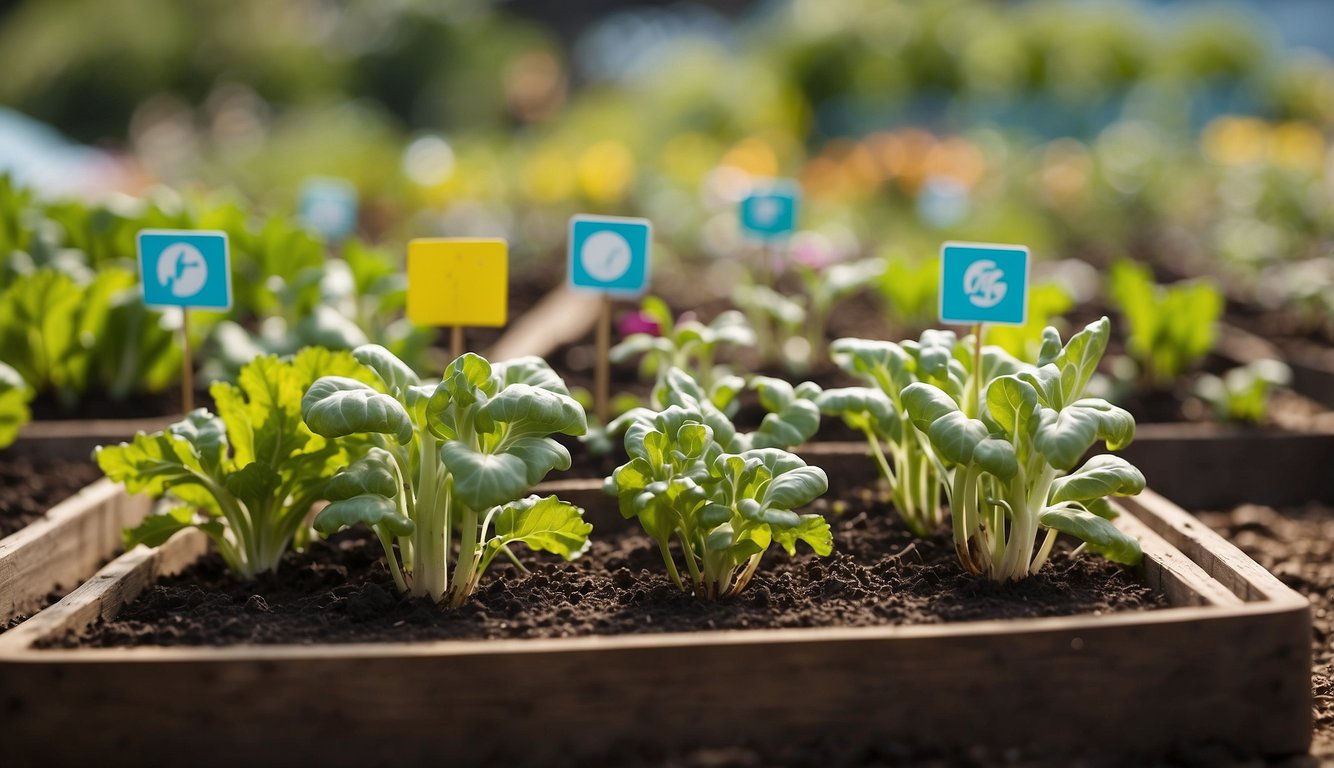TheHerbProf.com is a treasure trove of knowledge for those interested in natural healing and herbal remedies. The website is run by Paul Johnston MD. A naturopathic who has not only received extensive education in the field but also has personal experience in self-healing.
What is the Best Square Foot Garden Layouts? As an avid gardener, I have found that square foot gardening is one of the most efficient and practical methods for growing a variety of fruits, vegetables, and herbs in a limited space. This gardening method was first introduced by Mel Bartholomew, who aimed to create a simple and organized way of growing plants without the need for a large backyard or extensive gardening knowledge.
The beauty of square foot gardening lies in its simplicity. By dividing a garden bed into smaller square sections, gardeners can maximize their planting space and minimize the amount of time and effort spent on maintenance. This method also allows for better organization and easier crop rotation, which can lead to healthier plants and higher yields. However, choosing the best square foot garden layout can be a daunting task, especially for beginners. That’s why I have researched and tested various layouts to help you find the one that works best for your needs.
Understanding Square Foot Gardening – Best Square Foot Garden Layouts
Definition and Basics of Square Foot Gardening
As a passionate vegetable gardener, I have found that square foot gardening is one of the most efficient and productive ways to grow vegetables in a small space. Square foot gardening is a method of gardening that involves dividing a raised bed into a grid of one-foot squares. Each square is then planted with a different vegetable, herb, or flower, depending on the gardener’s preference.
The soil mix used in square foot gardening is typically a combination of compost, vermiculite, and peat moss, which provides a nutrient-rich and well-draining environment for plants to grow. The grid system allows for precise spacing between plants, which minimizes competition for water and nutrients and maximizes yields.
When choosing a location for your square foot garden, it is important to select an area that receives at least 6 to 8 hours of full sun daily. Avoid low areas that may turn into puddles after a hard rain, as this can lead to waterlogged soil and root rot.
The spacing between plants in a square foot garden is determined by the mature size of the plant. For example, a tomato plant requires one square foot of space, while a carrot plant requires only one-fourth of a square foot. The grid system makes it easy to calculate the number of plants that can be grown in a given area, and the precise spacing ensures that each plant has enough room to grow to its full potential.
Overall, square foot gardening is a great way to maximize yields in a small space while minimizing the amount of time and effort required to maintain the garden. With a little bit of planning and preparation, anyone can enjoy the benefits of a bountiful vegetable garden using this method.
The Advantages of Square Foot Gardening – Best Square Foot Garden Layouts
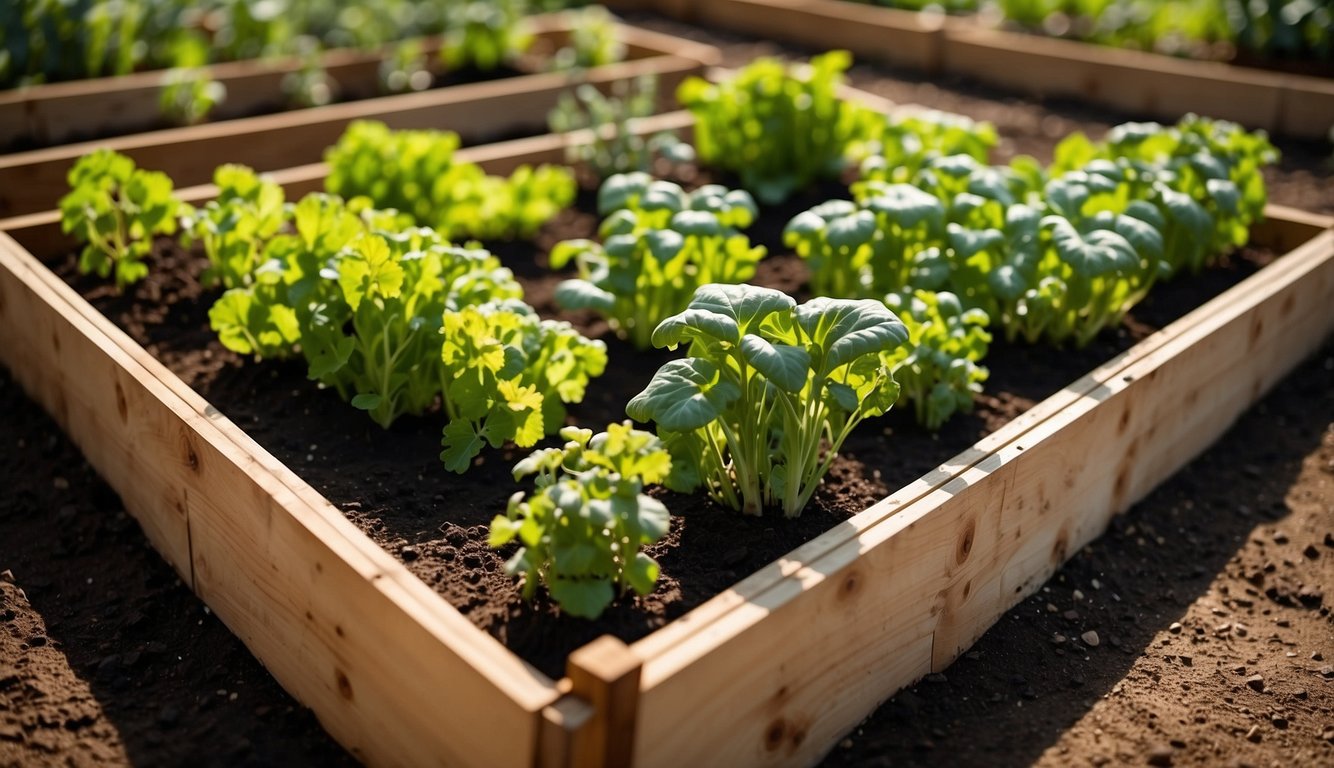
As someone who has been gardening for years, I can confidently say that square foot gardening is one of the best ways to maximize your yields while minimizing the amount of space you need. Here are some of the advantages of square foot gardening:
High Yields – Best Square Foot Garden Layouts
One of the biggest advantages of square foot gardening is that it allows you to get a high yield from a small garden. By dividing your garden into square foot sections and carefully planning what you plant in each section, you can maximize your yields. In fact, according to The Old Farmer’s Almanac, you can grow up to 16 plants in just one square foot of space!
Easy Maintenance – Best Square Foot Garden Layouts
Another advantage of square foot gardening is that it is easy to maintain. Because your garden is divided into small sections, it is easy to reach all of your plants without having to step on the soil and compact it. This means that you can weed, water, and harvest your plants without damaging them. Additionally, because your garden is small, it is easy to keep an eye on everything and ensure that your plants are healthy.
Space Efficiency – Best Square Foot Garden Layouts
Square foot gardening is also very space-efficient. If you have a small garden or limited space, square foot gardening is a great way to grow a lot of plants in a small area. By carefully planning what you plant in each square foot section, you can ensure that you are using every inch of space efficiently. Additionally, because your plants are planted close together, there is less space for weeds to grow, which means less weeding for you!
In summary, square foot gardening is a great way to maximize your yields while minimizing the amount of space you need. Whether you have a small garden or limited space, square foot gardening is a great way to grow a lot of plants in a small area. With careful planning and maintenance, you can enjoy a bountiful harvest from your square foot garden.
The Perfect Square Foot Garden Layout

When planning a square foot garden, it’s important to choose the right layout to maximize your yield and minimize space. As an experienced gardener, I’ve found that the perfect square foot garden layout consists of two main components: the optimal size and the best soil type.
Optimal Size of a Square Foot Garden – Best Square Foot Garden Layouts
The optimal size of a square foot garden depends on the space available and the number of plants you want to grow. A 4’x4′ raised bed is a great starting point for beginners, as it provides 16 square feet of growing space. However, if you have limited space, you can create a smaller garden by using a 2’x2′ or 3’x3′ raised bed. On the other hand, if you have a larger space, you can create a bigger garden by using multiple raised beds.
When planning your square foot garden layout, it’s important to consider the spacing between plants. The Square Foot Gardening method recommends dividing each square foot into 16 smaller squares, with each square representing a plant. This spacing allows each plant to have enough space to grow and prevents overcrowding.
Best Soil Type for a Square Foot Garden – Best Square Foot Garden Layouts
The best soil type for a square foot garden is a mixture of compost, vermiculite, and peat moss. Compost provides essential nutrients for plants, vermiculite improves soil aeration and water retention, and peat moss helps to retain moisture and improve soil structure.
When preparing your soil, it’s important to mix the ingredients thoroughly to ensure an even distribution. A ratio of 1/3 compost, 1/3 vermiculite, and 1/3 peat moss is a good starting point. However, the exact ratio may vary depending on your soil’s composition and the plants you want to grow.
The perfect square foot garden layout consists of an optimal size and the best soil type. By following these guidelines, you can create a productive and space-efficient garden that will provide you with fresh produce throughout the growing season.
Planning Your Square Foot Garden – Best Square Foot Garden Layouts
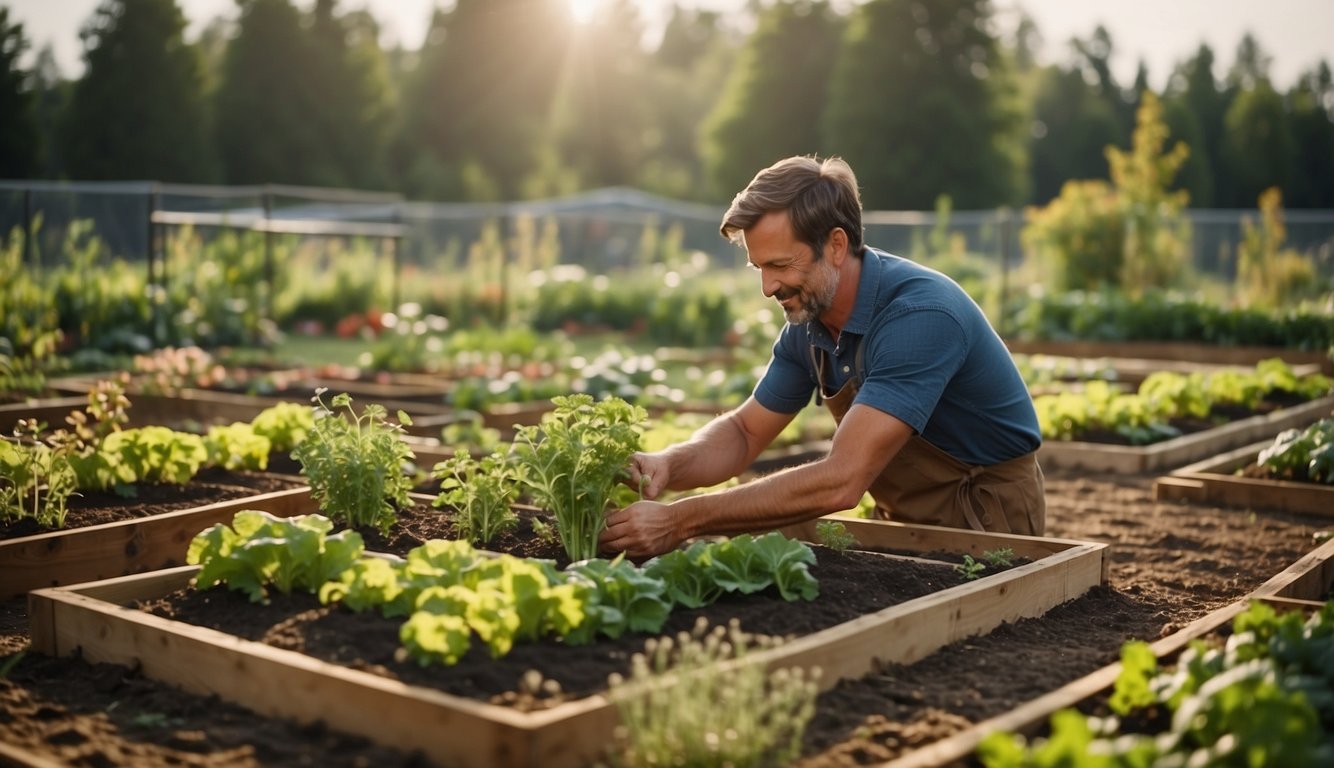
When planning your square foot garden, there are a few things to consider to ensure a successful and bountiful harvest. Here are some tips to help you plan your square foot garden:
Creating a Grid
The first step in planning your square foot garden is to create a grid. This will help you visualize the layout of your garden and determine how many plants you can fit in each square foot. You can create a grid using string, stakes, or even a permanent raised bed. Once you have your grid in place, you can start planning which plants to grow in each square.
Choosing the Right Plants – Best Square Foot Garden Layouts
When choosing plants for your square foot garden, it’s important to consider the size of each plant and how many plants you can fit in each square foot. Some great vegetables for square foot gardening include onions, tomatoes, radishes, peppers, lettuce, and herbs. Carrots, beans, peppers, spinach, and squash are also great crops for square foot gardening. You can also add flowers and companion plants to your garden to attract pollinators and deter pests.
Considering Sunlight and Shade Placement
When planning your square foot garden, it’s important to consider the placement of your garden in relation to the sun. Most vegetables need at least 6 hours of sunlight per day, so make sure your garden is in a location that receives enough sunlight. You should also consider the placement of taller plants that may shade smaller plants. For example, you may want to plant taller plants like tomatoes or cabbage on the north side of your garden to avoid shading smaller plants.
By following these tips and using a garden planner, you can create a successful square foot garden that will provide you with a bountiful harvest all season long. Remember to start your seedlings early and use proper spacing and planting techniques to ensure healthy and productive plants. Happy gardening!
Tips for a Successful Square Foot Garden
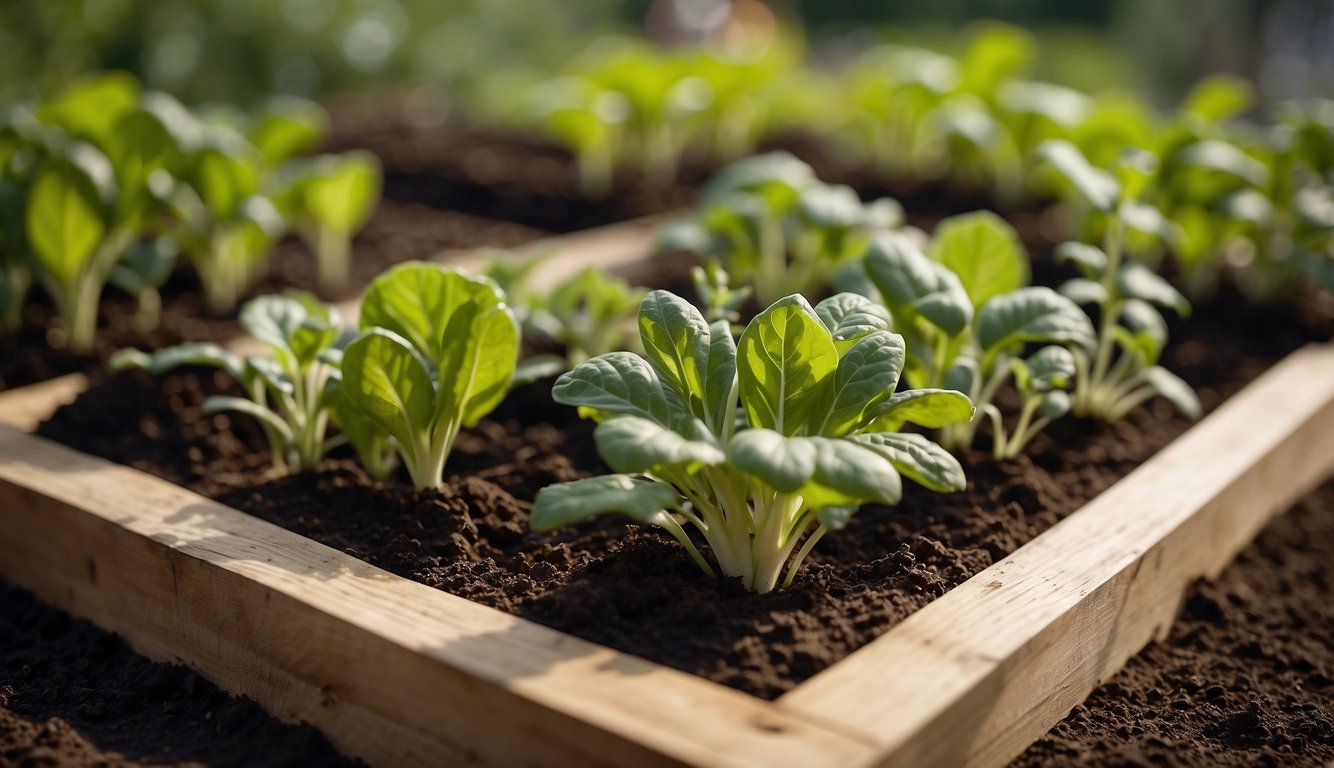
As an experienced gardener, I have learned some tips that can help you achieve a successful square foot garden. Here are some of the tips that you should keep in mind:
Attention to Plant Compatibility
When planning your square foot garden, it is essential to pay attention to plant compatibility. Some plants grow well together and can even help each other grow, while others can hinder growth. For example, onions and tomatoes are great companion plants, while radishes and lettuce should not be planted together.
Understanding Watering Needs
Watering is crucial for the growth of your crops. Different plants have different watering needs, and it is essential to understand them to avoid over or under-watering. For instance, carrot and bean plants require moderate watering, while pepper plants need consistent watering.
Mulching can help retain moisture in the soil, which is crucial for your crops’ growth. You can use organic mulch such as straw, leaves, or grass clippings. Mulching also helps prevent weed growth and keeps the soil cool during hot weather.
Crop rotation is also essential in maintaining healthy soil and preventing pests and diseases. You should avoid planting the same crops in the same place every year. Instead, rotate your crops to different areas of your garden each year.
By following these tips, you can achieve a successful square foot garden and enjoy a bountiful harvest of vegetables, fruits, and flowers.
Before You Go – Best Square Foot Garden Layouts
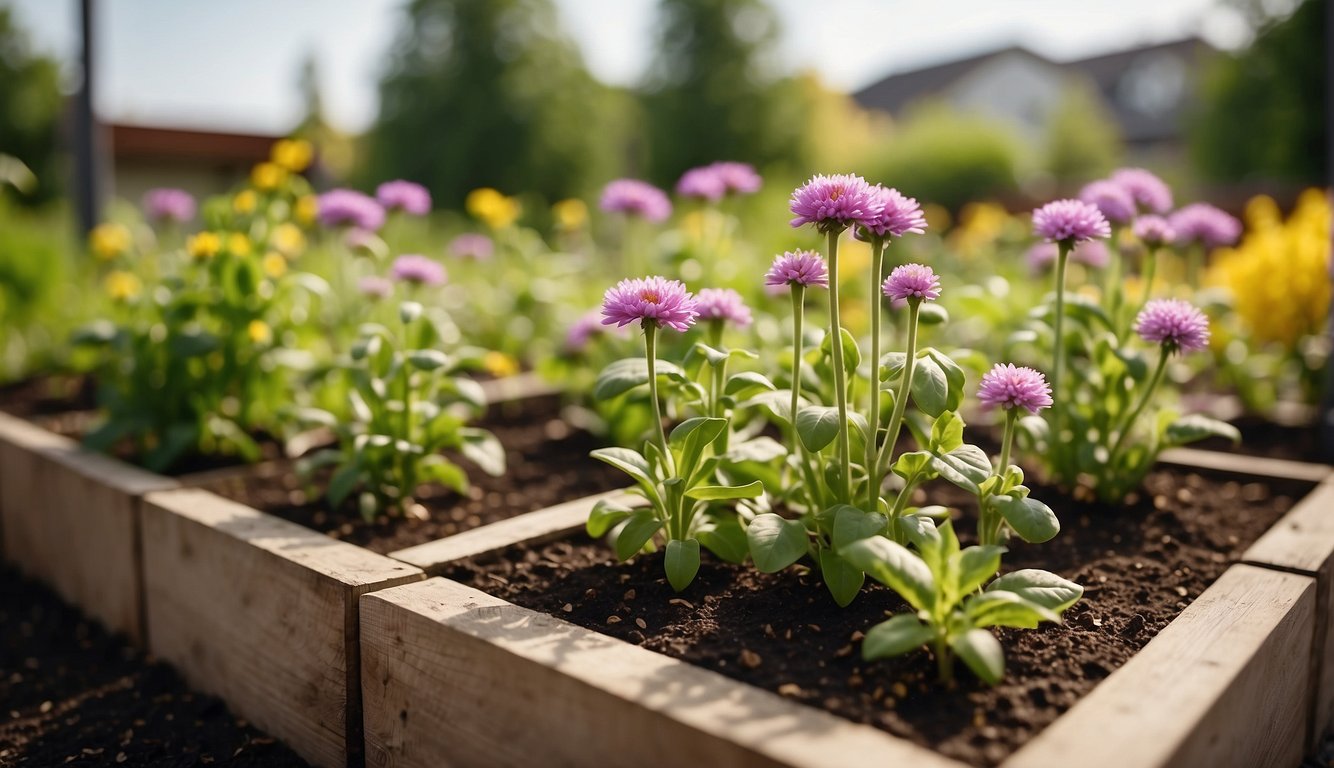
Creating a square foot garden is an excellent way to grow a variety of vegetables in a small space. By using a raised garden bed and lattice strips, you can create a garden that is both functional and attractive.
One of the advantages of square foot gardening is that it allows you to grow more crops in less space, making it an ideal option for those with limited space. Additionally, using a soilless mix can help to reduce the risk of disease and pests, while also providing the nutrients that your plants need to thrive.
When planning your square foot garden, it’s important to consider the pros and cons of this method compared to traditional rows. While square foot gardening can be more efficient, it may not be the best option for all gardeners.
To create a successful square foot garden, follow a step-by-step guide that includes using screws to secure the lattice strips to the raised garden bed, and planting a variety of vegetables such as arugula and vine tomatoes.
Overall, square foot gardening is a great option for those who want to grow their own vegetables but have limited space. By using the right techniques and tools, you can create a beautiful and productive garden that will provide you with fresh produce all season long.
Best Square Foot Garden Layouts: A Herbalist’s Guide
Today, we’re diving into the world of Square Foot Gardening. Specifically, we’re going to talk about the best Square Foot Garden layouts. Yes, with the right layout, you can maximize your harvest and enjoy a beautiful garden!
First off, let’s talk about why you’d want to use the best Square Foot Garden layouts. It’s simple – it’s a fantastic way to make the most of your space! Plus, it’s a great way to organize your garden and make it easier to manage. You can check our homepage here!
Now, let’s tie this back to theherbprof.com. As your friendly neighborhood Herbalist Blogger, I’m all about helping you nurture your green thumb. And using the best Square Foot Garden layouts? It’s a perfect example!
References – Best Square Foot Garden Layouts
Little Herb Encyclopedia, by Jack Ritchason; N.D., Woodland Publishing Incorporated, 1995
The Ultimate Healing System, Course Manual, Copyright 1985, Don Lepore
Planetary Herbology, Michael Tierra, C.A., N.D., Lotus Press, 1988
Handbook of Medicinal Herbs, by James A. Duke, Pub. CRP Second Edition 2007
The Complete Medicinal Herbal, by Penelope Ody, Published by Dorling Kindersley
Check the Following Articles!
Best Neem Oil: Top Picks for Natural Skin and Hair Care
Root Rot Vs Healthy Roots: Understanding the Differences
Can You Grow Corn in a Pot? Successful Container Maker!
Frequently Asked Questions – Best Square Foot Garden Layouts
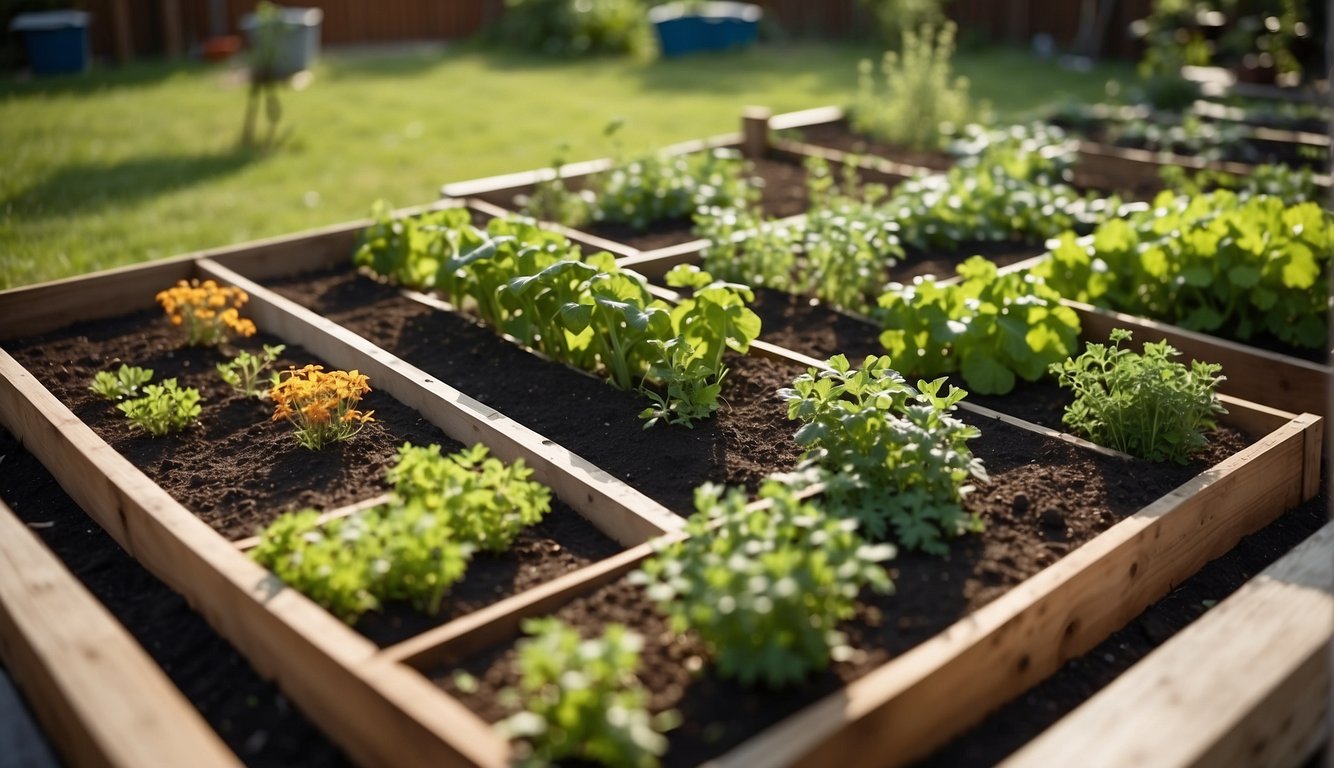
What are the optimal dimensions for a raised bed in square foot gardening?
The optimal dimensions for a raised bed in square foot gardening are 4 feet by 4 feet or 4 feet by 8 feet. These dimensions make it easy to reach all areas of the bed without stepping on the soil, which can compact it and hinder plant growth. The height of the raised bed can vary, but a height of 6 to 12 inches is recommended.
How can I effectively plan a square foot garden layout?
To effectively plan a square foot garden layout, you should first determine the size and shape of your garden bed. Next, decide which vegetables and herbs you want to grow and how many plants you want to include in each square foot. Use a square foot garden planner or graph paper to map out your garden bed and place plants in the appropriate squares. Consider companion planting and crop rotation when planning your layout.
Are there any free tools available for square foot garden planning?
Yes, there are several free tools available for square foot garden planning. Some popular options include the Square Foot Gardening Foundation’s online garden planner, the Old Farmer’s Almanac Garden Planner, and the Mother Earth News Vegetable Garden Planner. These tools allow you to customize your garden layout, add plants, and track your progress.
What considerations should be made when creating a 4×8 square foot garden plan?
When creating a 4×8 square foot garden plan, you should consider the amount of sunlight the garden will receive, the soil quality and drainage, and the types of plants you want to grow. You should also consider the spacing between plants and the height of the plants when mature. Companion planting and crop rotation should also be taken into account.
Where can I find a printable square foot garden planner?
You can find printable square foot garden planners online from various sources, including the Square Foot Gardening Foundation and the Old Farmer’s Almanac. These planners can be downloaded and printed for free, and they provide a helpful guide for planning your square foot garden layout.
Can I use Excel to create a customized square foot garden layout?
Yes, you can use Excel or other spreadsheet programs to create a customized square foot garden layout. Simply create a grid with each cell representing one square foot, and use the formatting tools to add colors and labels to each cell. You can also use Excel to calculate the number of plants needed for each square foot and track your progress throughout the growing season.
